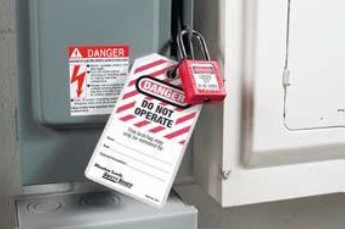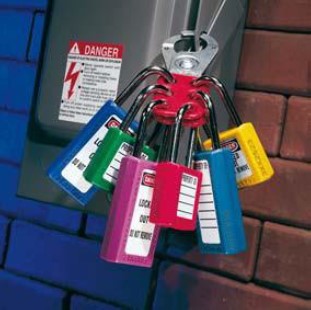Worker injured after asphalt plant hits elevating work platform
In February 2022, a worker suffered serious leg injuries when the basket of a boom-type elevating work platform (EWP) he was using was struck and pulled along by an elevated asphalt bin system, part of an asphalt plant.
Initial enquiries indicate the man was in the EWP basket doing maintenance work close to the asphalt bin system, when for reasons yet to be established, the bin and associated components began moving along its tracks without warning. As a result, part of the EWP’s basket was caught by the asphalt bin system and dragged along, injuring the worker.
Investigations are continuing.
These findings are not yet confirmed, and investigations are continuing into the exact cause.
Safety issues
Workers doing maintenance, repairs, installations, services and cleaning on machines are very vulnerable and have a higher risk of being seriously injured or killed through inadvertent operation of machinery and equipment they are working in, on, or around.
Plant and machinery come in many different shapes and sizes. They pose significant risks to workers when moving parts are exposed, including:
- crushing or shearing points
- being trapped by the mechanism of the machinery or equipment through poor isolation of energy sources or stored energy
- coming into contact with moving parts during testing, inspection, operation, maintenance, cleaning or repair.
Accidental start-up or movement of a machine mechanism can occur if:
- control levers or buttons are bumped or knocked
- a short circuit of the control system occurs.
EWPs are used in many situations which present unique hazards to the operator, including but not limited to, powerlines, trees, surrounding buildings and structures.
Ways to manage health and safety
Taking steps to manage risks is a condition of doing business in Queensland. Effective risk management starts with a commitment to health and safety from those who manage the business. If an incident occurs, you'll need to show the regulator that you’ve used an effective risk management process. This responsibility is covered by your primary duty of care in the Work Health and Safety Act 2011.
Use the hierarchy of controls to help decide how to eliminate and reduce risks in your place of work. The hierarchy of controls ranks types of control methods from the highest level of protection and reliability to the lowest. It’s a step-by-step approach to eliminating or reducing risks. You must work through the hierarchy of controls when managing risks, with the aim of eliminating the hazard, which is the most effective control.
Possible control measures to prevent similar incidents
A person conducting a business or undertaking (PCBU) must eliminate risks arising from plant in the workplace, or if that is not reasonably practicable, minimise the risks. This includes complying with any requirements under relevant work health and safety legislation in relation to the work.
Before accessing any parts of plant for cleaning, maintenance or repairs, all hazards must be identified and adequately controlled. Effective control measures for maintenance of plant are often made up of a combination of controls.
A safe system of work should be implemented to manage the risks associated with inspection and maintenance of plant. This could include, but is not limited to the following:
- ensuring the plant is inspected, maintained and repaired according to the manufacturer’s recommendations and specifications (the manufacturer's instructions must be included in a safe work procedure on how inspection and maintenance should be carried out)
- all energy sources likely to activate the machinery and equipment and expose people to hazards should be identified prior to work beginning
- developing an isolation procedure which should be followed by workers when they are required to perform maintenance, repair and cleaning of plant. This involves isolating potentially hazardous energy so the plant does not move or start up accidentally. Isolating plant may also ensure entry to a restricted area is controlled while the specific task is being carried out
- developing and implementing a lock-out process which is the most effective isolation procedure. This process should include:
- shutdown of machinery and equipment
- identification of all energy sources, isolation points and other hazards
- isolation of all energy sources
- controlling or de-energising all stored energy
- using a device that effectively locks out the isolation points. For example, switches with built-in locks and lock-out circuit breakers, chains, safety lock-out jaws and safety padlocks (Figure 1). Where possible, use a lock that allows one or more padlocks to be fitted. If more than one person is working on the plant at the same time, you should ensure each worker is able to attach a padlock to the device (Figure 2).
- there should be no duplicate key for any lock, except a master key that is kept in a secure location and which should only be used in an emergency. If more than one energy source needs to be isolated to enable safe shut-down of the plant, the single key to each lock-out device should be held by the same person:
- tagging machinery controls, energy sources and other hazards. Tags should only be used as a means of providing information to others at the workplace. A tag should not be used on its own as an isolation device (only a lock is effective in isolating the energy source)
- testing by ‘trying’ to reactivate the plant without exposing the tester or others to risk.

Figure 1. Example of lock-out with a tag

Figure 2. Example of multiple locks
Source: Guide to machinery and equipment safety
- ensuring there is sufficient space for safe access to the plant for maintenance, repair, or cleaning activities
- putting in place a process to enable effective communication and consultation with workers and others to prevent any risks arising from restarting plant operation when plant has been shut down due to inspection, maintenance or cleaning
- determining what special skills are required for people who operate the plant or carry out inspection and maintenance, including preventative maintenance
- providing information, training, instruction and supervision to workers who use the plant.
When using an EWP:
- always check the work area for hazards before starting work such as the locations of buildings, towers, sheds and other types of structures within or near the EWP’s work zone
- ensure operators are fully aware of their surroundings while they're working (distractions such as conversations with other workers should be avoided)
- supervisors and spotters should be trained and on site when an EWP is in use to help the operator navigate difficult obstructions.
The control measures you put in place should be reviewed regularly to make sure they work as planned.
More information
- Managing the risks of plant in the workplace Code of Practice 2021 (PDF, 1.57 MB)
- Managing the risk of falls at workplaces Code of Practice 2021 (PDF, 3.9 MB)
- How to manage work health and safety risks Code of Practice 2021 (PDF, 0.65 MB)
- Isolating machinery when not in production – Film
- Using elevating work platforms safely - Film
- Guide to machinery and equipment safety (PDF, 1.46 MB)
Support for people affected by a serious workplace incident
Have you been affected by a workplace fatality, illness or serious injury? For advice and support, visit our Facebook page or email ohs.coronialliaison@oir.qld.gov.au.